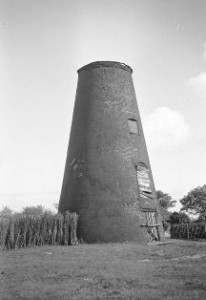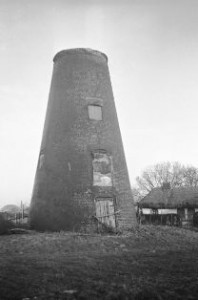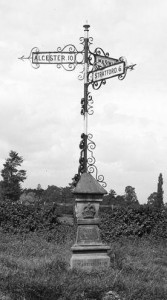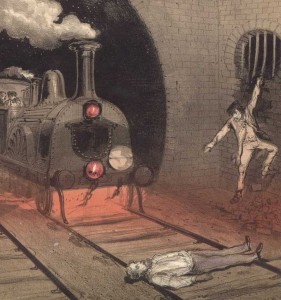I’m afraid it’s been a while since I last blogged and, although I do have an interesting piece about the Maddison Collection and Joseph Priestley almost completed, every time I sit down to finish it, something else comes up! In the meantime, however, I thought it would be interesting to share yesterday’s events with you.

Reed Mill in 1934
Way back in March, we were contacted by researchers from the Channel 4 programme The Restoration Man. They were looking at the restoration of Reed Mill in Kingston, just outside Canterbury, in Kent. We have a small amount of material on this particular mill, mostly from the C.P. Davies collection, although there are a couple of images of the mill in its dilapidated state in the Muggeridge Collection as well. It turns out that C.P. Davies’ notes (listed on our webpages under Kingston) hold some important clues to the origin and dating of the original Reed Mill, which the programme makers were keen to include. Unfortunately, our reading room is not particularly photogenic but after a visit to the Cathedral’s archives the researchers were keen to do some filming there. Although it took several months to organise, we finally arranged for the transfer of the relevant University’s Special Collections material down to the Cathedral Library and Archive for the filming, which took place yesterday afternoon.

Reed Mill in 1940
I was lucky enough to be in charge of our material during the course of the shoot, which meant that I could watch the work as it was going on. The Cathedral Library, for those who don’t know, is not normally open to the public, unlike the Archives Search Room, which meant that the crew could wander around and do multiple takes under the watchful eye of the Cathedral Librarian, Karen Brayshaw. I had heard (and seen) some horror stories about TV crews working with rare books and archival materials, but everyone working on Restoration Man was very sensitive to the materials and to the environment in which they were working. They were also quick to ask Karen or myself before they moved or touched anything. We have some other TV researchers looking at some of our materials at the moment, and I have to say that if they are all like the Restoration Man crew and researchers, then I will have absolutely no qualms about allowing them to use materials which we hold.
And the results of the research? Well, you will have to watch the programme, which will hopefully be coming onto our screens in January, to find out. All I can say for sure is that both Karen, myself and the crew had a great time filming!
If you are interested in our mills collections, have a look through our webpages to find out more about them.
If you or someone you know is involved in restoring Reed Mill, please do get in touch and let us know how it is going; we would love to add contemporary materials and information to our existing records on this mill.





